Update: They will become eBikes, see Conversion to eBike. We bought these bikes in 2012, the page is a bit outdated, but for reference this page is kept.
Dutch: See Beoordeling van een goedkope mountainbike voor veel plezier
An ATB or a mountain bike is not for the road, the rolling resistance is higher and the lack mudguards is no pleasure in the Netherlands. However in the correct terrain an ATB is the right choice and much fun. Reason enough for us to buy to low-cost ATB’s at KS-Cycling. Well, the feelings are mixed because there has been a lot of tinkering but afterwards we can state the bikes are worth their money. The model turned out te be exactly the right choice. If you consider such a bike, do not go for lower prices because then you get really inferior parts.
Table of Contents
Introduction
The bikes have suffered from wear during the last months in rough terrain and I would like to share that experience. Our approach is recreational but the conditions for the bikes (and us) were heavy and sometimes resulting in problems. There are several parts prone to rust, but that is a matter of protecting and impregnating. Nothing to worry about, and this is something that almost every bike faces. Below is the bike and the parts are discussed in detail.
The parts
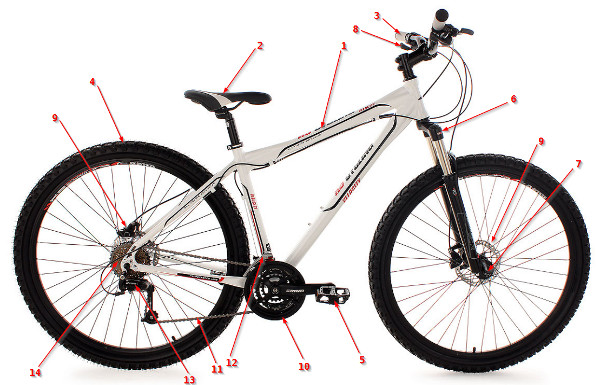
1: Frame
The frame is rigid. Although made of aluminium, it is quite heavy but that is not directly a disadvantage during heavy use. One downside is the fixation of the calipers that turned out to be misaligned on one of the bikes, see below brakes. The frame is sufficiently rigid and has absorbed all collisions well. The clearance at the front wheel is large enough for the combination of 29″ wheels and the travel distance of the front fork.
2: Saddle
Probably dirt cheap but not bad. Make sure that in the rain it is covered with a plastic bag because water passes through the seams in the foam. When you are going to sit you’ll push a glass of water through the seams out. The saddle can be fairly adjusted.
3: Steer and grips
Fine, good grip on handles and sufficiently far apart for good control. Parts can also be positioned in a way that when the bicycle is upside down it will not rest on switches the bell.
4: Tyres and rims
At the factory, the tires are fitted sloppy. The clearance between the rim and tire bead causes a lot of height difference in the tread. Not nice to see but not so important with studded tires. After a tire puncture it was no trouble getting the tire evenly back on the rim. The tire itself, low end of the market is doing very well in the area where we are: rocks, boulders and clay. A disadvantage of the studs is that they fill up with wet clay, making it almost almost impossible to ride. Slick tires are not an option so we’ll have to live with it. Excellent for our condition with pounds of clay in the wheels.
The rim is fine, colliding against the rocks does not result in deformation. The tires looks cool but will be to coarse for many users. The rolling resistance is surpricingly reasonable – if inflated to the full 4.5 bar.
The choice of wheel size 29″ appears to be extremely wise because there are few rocks that can not be taken. I should not think about using 26″ wheels in this area.
5: Paddles
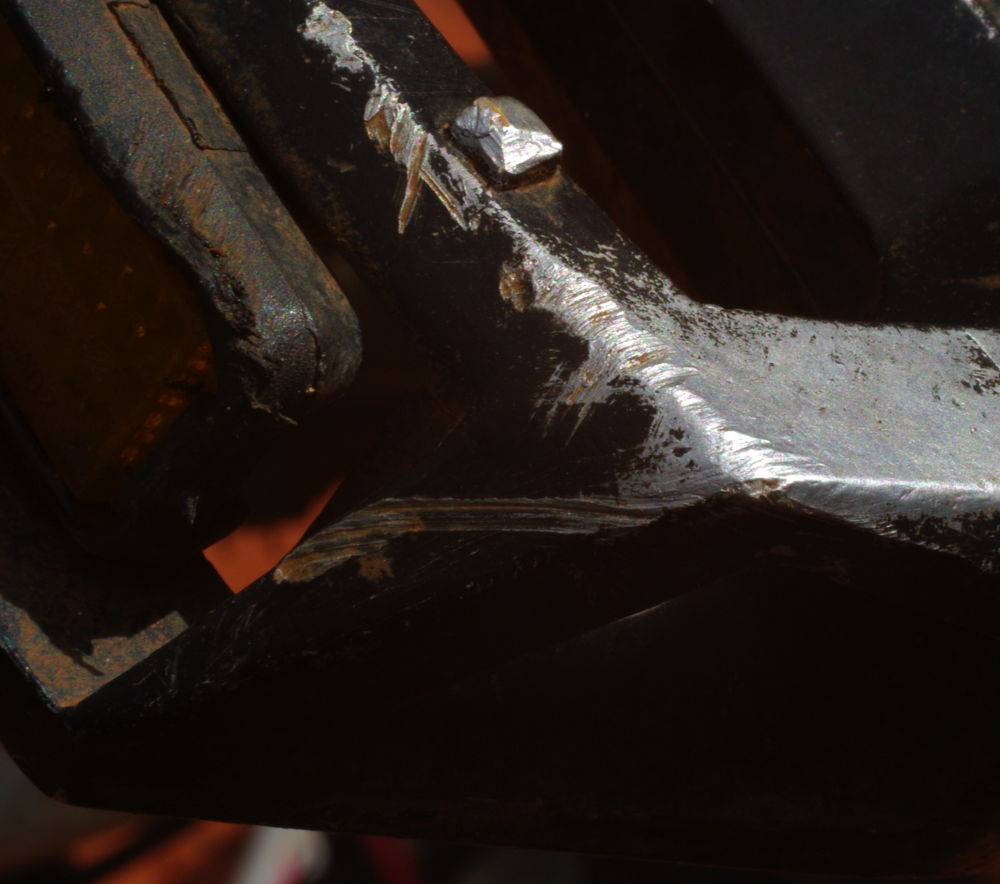
Without locks for footwear, made of aluminum. Very solid and this is necessary because often a paddle is abrading on a rock and then the bike with driver is launched. It is difficult and not always possible to place the pedals so that rocks can be avoided. The ground clearance is sufficient. However, it is necessary to tighten the pedals and the crank regularly on both bikes to avoid a cracking (and unhealthy) sound during riding.
6: Front fork
Each travel of the springs means energy absorption that must be put back with the legs, as simple as that. More important, too much suspension also ensures vague steering, especially in sharp turns. The suspension can be switched off and that’s exactly what I do on hard clay roads and ordinary roads. In the field, the suspension is a solution and protects the wrists. However, the suspension is tightest but my weight causes that too. The fork does its job very well then. There is a lot of dust on the spring cylinders when greasy. The seals keep everything outside. Model: SR Suntour SF11XCR-P-MLO.
7: Quick Releases
The quick releases work well, too bad that they are susceptible to surface rust. The continuous rod seems phosphated and does not rust, that would be unsafe. The tensioners are a relief during repair or when pasting a flat tire. Brand Quando.
8: Control gear
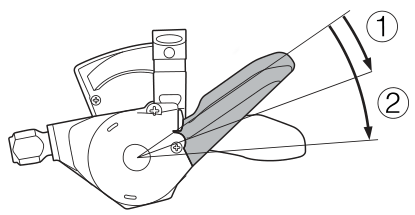
About the gears I am less enthusiastic, except the control, which is great. Shimano Rapidfire M9. Minus is the fragility of the shift indicator but the positions are still in the mind of the cyclist, I never look at the indicator.
9: Brakes
The brakes are really good. Hydraulic implemented and that means that there is an oil line running from the steering wheel to the disc. Type: Shimano BR-M446. Dosage is good and I should not think about driving through bushes with rim brakes. The mating surfaces of the frame and the brake caliper must be properly aligned. In one of the frames that was not the case causing the pads skewed relative to the disk. A precise filing job of the frame solved this eventually. Very occasionally there will be some coarse sand between the pads and the disc but that is quickly released during riding. Be careful with grease. Mist from an aerosol should not land on the disk and the pads. So always lubricate the chain etc. with brush or stay away from the brakes. Small minus is that the brakes squeal during braking at low speeds. In the area where I cycle hunters are quite irritated. Using Brake Cleaner is absolutely inadvisable because it dissolves the O-rings of the caliper. It is useable on the disk but ultimately a good descent is the best way to clean up after cleaning with the garden hose. All in all a part giving me a feeling of security.
10: Crank set
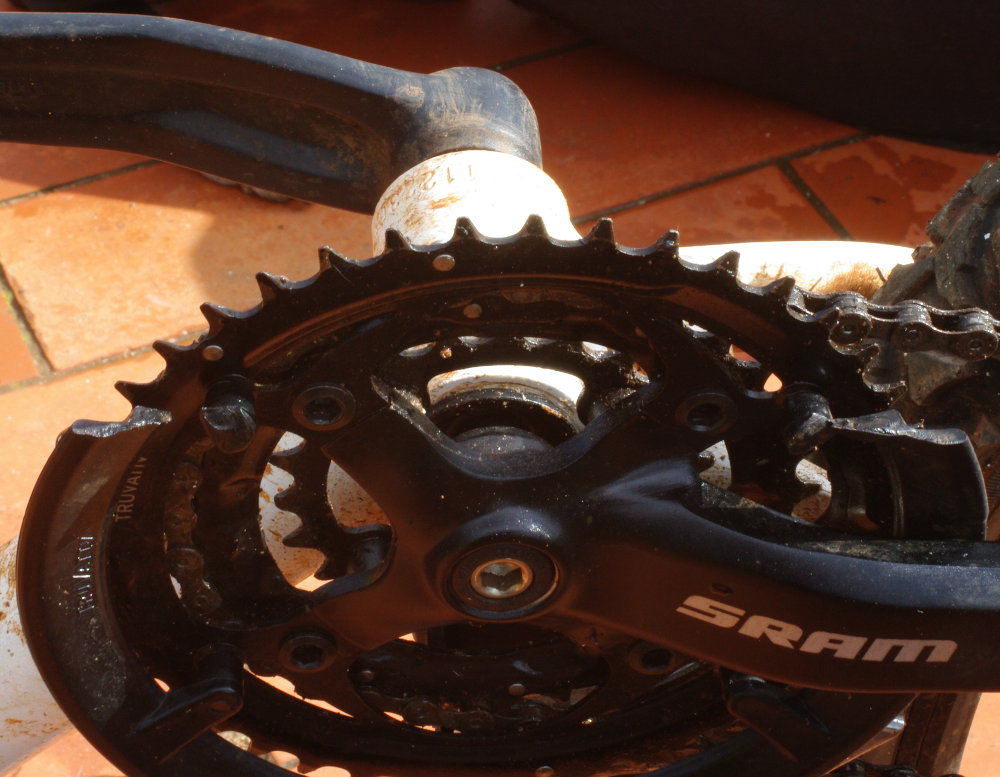
The crankset as a whole is akay and works well with the Shimano Deore components. However rough terrain also means the occasional collision with the surface. The protection ring is not designed for these confrontations because it is made of plastic. The next time the teeth of the largest sprocket will be hit. One would expect a strong metal ring. In addition, the chain guard ring should also protect your pants. I now use clips.
11: Chain
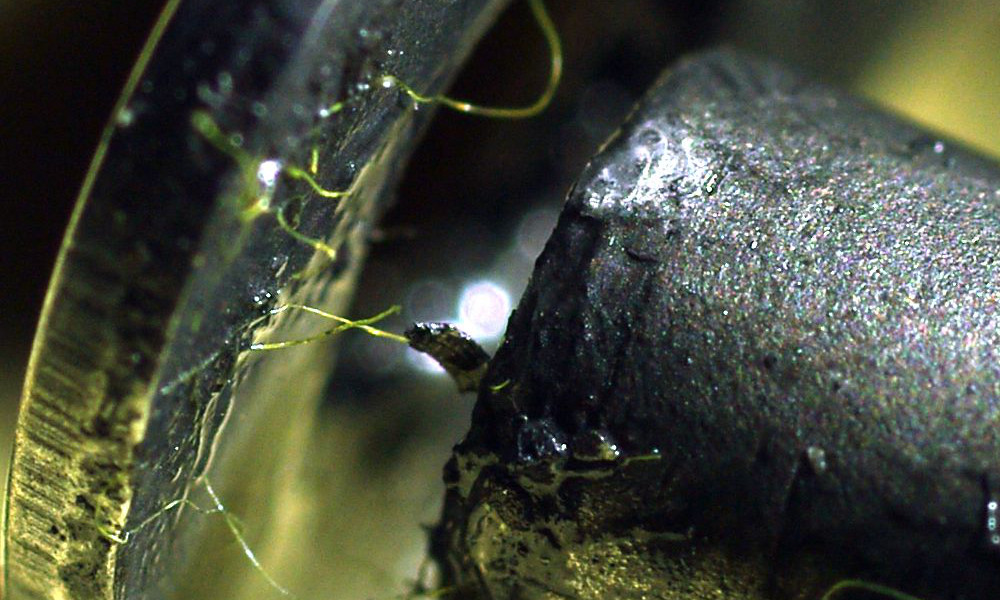
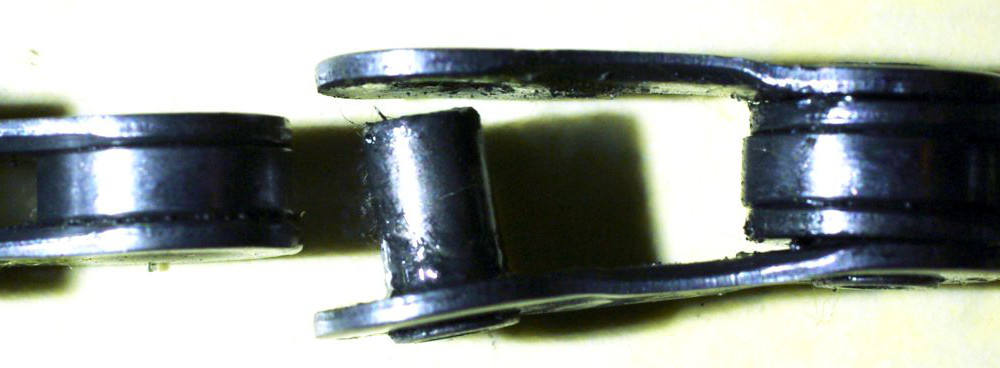
Oh, what a tragedy. After three kilometers on the new bike the chain broke. The disadvantage of buying a bike abroad is that you do not easily return your bike for warranty. Extremely accommodating but late KS-Cycling offered to repair it local on their costs. Being a KMC chain involved and the European distribution close to me around the corner I asked KMC how it could happen. The answer: “It can not be.” The attached photos showed that the manufacturer KS-Cycling itself clinched the chain and that is forbidden, a bad solution. KMC was not to blame. In fact, I was very pleasantly surprised that I got two chains of the best segment at no cost. Compliments because nowadays there are not many manufacturers that take their individual customers seriously! The chains are in use now and are indestructible. In the future only KMC chains – and that is advertising that they deserve!
12, 13: Derail system front and back
Shimano Deore. But actually it does not really matter because the concept of derailleur is by definition prone. Both bikes I had to re-adjust after receipt. KS-Cycling would have done better. One bike I had not adjusted because it turned out that the cassette was not properly mounted. Derailleurs are a disaster in this area. You can adjust it well but I have had many failures:
- Chain between the spokes and gear: Shocks and pebbles with clay between the chain and the sprockets do strange things. Chain stuck and only by force pulled out of the “gutter”.
- Bending of back unit: When derailing the chain there are large forces at stake. Adjusting afterwards is no fun
- No abbility to switch gears: Clay and stones form a mass in the front derailleur making it stuck. Even now and then a run off chain.
- Displacing of shift moments caused by by clay, spontaneous switching moments and that’s not nice when you’re standing.
If there is something I am really dissapointed about it is the geraring. Maybe not so much the line of Shimano Deore but just the concept of a derailleur on an ATB. The load of the gearing is simply to much. Perhaps the problem in the Netherlands play less but here in Portugal it is problematic. It is a serious consideration to switch to a hub gear.
14: Cassette
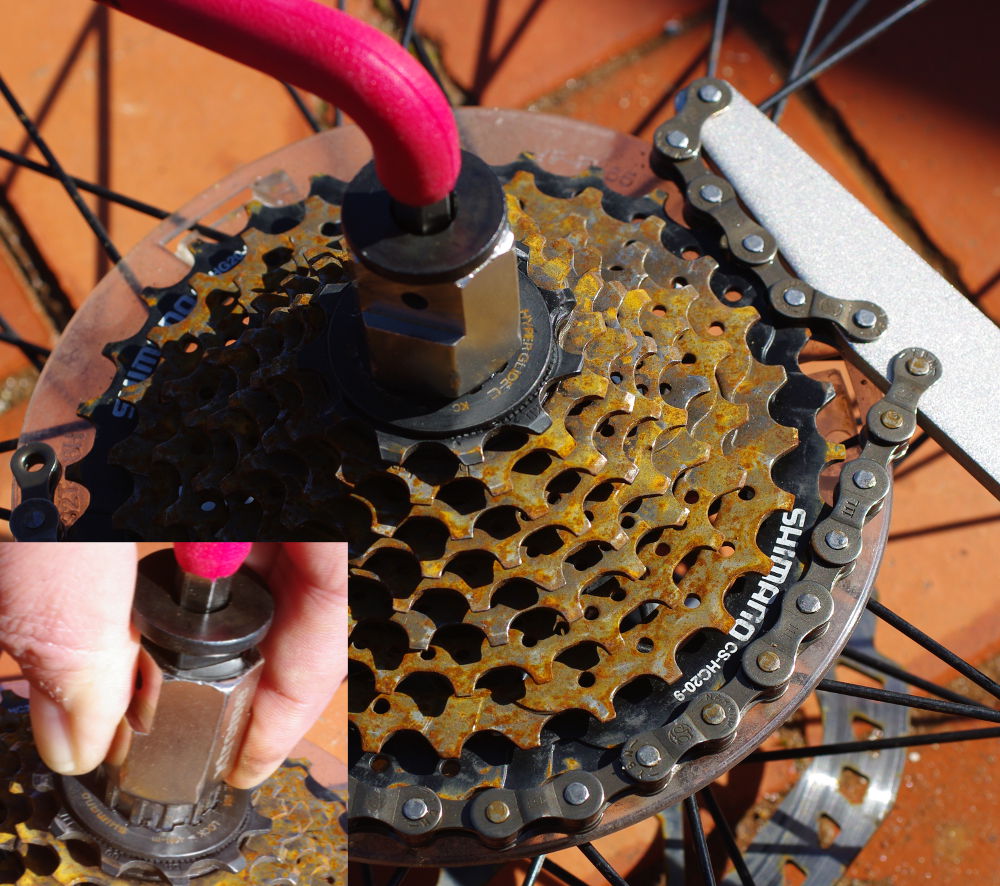
In itself there is nothing wrong with Deore cassette. Unfortunately, KS-Cycling did not properly tighten the cassette causing play on the cassette. This caused a not adjustable rear gear: tuning the small gear causes the large gear to malfunction and vice versa. Because I had no special tools, I ordered it. Just a full tool box from Xtreme at rose.nl. Finally solved that problem.
Conclusion
Finally we have two excellent bikes – I leave that straight.
- The gears are not suitable for this terrain (mountains, clay, stones and rocks). In the Netherlands, this will not be a problem.
- 29 “wheels are very nice.
- Hydraulic disc brakes: You can not do without.
KS-Cycling made some serious mistakes but also tried to correct it. Ultimately this company offers very much bike for a minimal price. Maybe it’s better if they make a bike 50 Eur’s more expensive and do a better final control, even then they are extremely competitive. It is absolutely recommended to buy a mid-end bike by this company but carefully check everything before you make your first ride or visit an expert.
Planning a trip? Take care of proper tools, a set from Xtreme for example. For long trips a spare chain, some basic things like Hex screwdriver, tire repair stuff and something to clean.